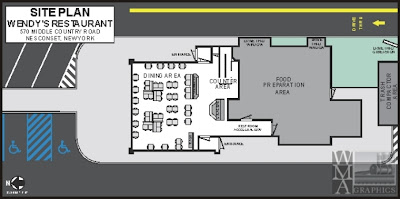 Site plan for a Wendy's restaurant
Site plan for a Wendy's restaurant
When McDonald's tried to introduce pizza in the early 1990's it flopped spectacularly and predictably.
- Stores had no ovens. Retrofitting them, even for compact units, was difficult and burdensome.
- Many independent operators, lacking faith in the concept, refused to undertake the investment required.
- Execution was inconsistent with the McDonald's operation. A make to order product was introduced to a kitchen that precooked everything else in batches.
- Consumers were confused. The chain could not support the concept with national advertising when so many outlets were not participating. And what kind of pizza could a quick service restaurant throw together anyway?
Even though some chain restaurants are now in their eighth decade, by which point remodeling would seem to be as routine as opening new stores, all chains struggle in this area. Hampered by:
- incomplete information about their installed base of facilities
- design processes that rely on building expensive, over-determined prototypes with insufficient input from operations, marketing and merchandising
- building and materials sourcing processes that must react to final designs because they have not been involved to inform design requirements
Retail Lifecycle Management™ is the core of retail strategy. Curiously and at great cost, in an age when PLM (product lifecycle management) techniques have invigorated design programs in automotive, aerospace and high tech industries, Retail Lifecycle Management remains little understood and grossly underfunded.
See our other posts on Retail Lifecycle Management (RLM) by clicking on the "RLM" link in the Index of Content on This Site section on sidebar to the right of this blog. See in particular our post A Lifecycle Approach to Retail Store Development.
To learn more about our work in consulting, read about our Practice or check out our Case Studies
Print this post



